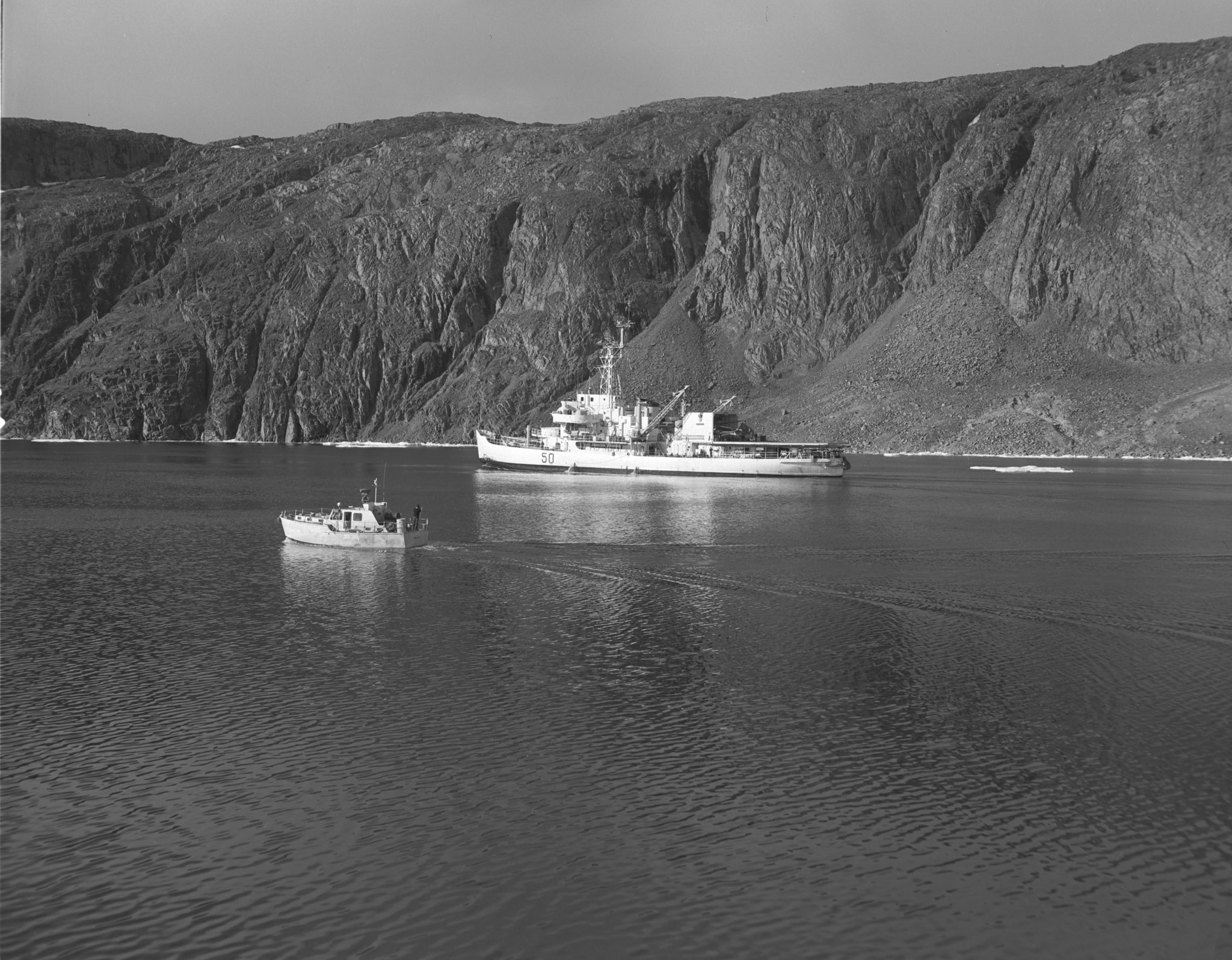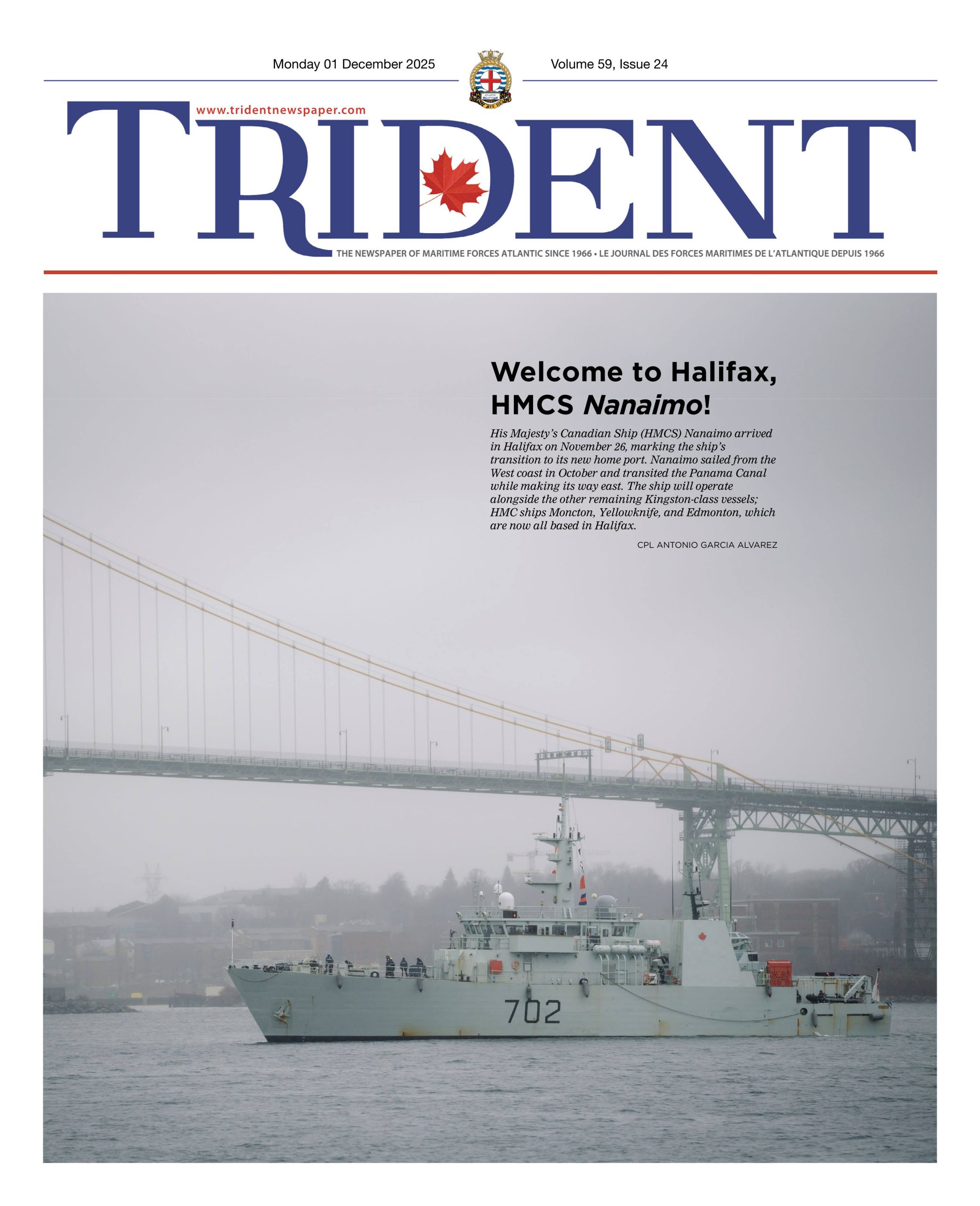
DND
Pogo: The little vessel that could
By Jennifer Gamble,
Curator, Naval Museum of Halifax
From trailblazer to training vessel, the 65-year-old Pogo has had a unique life. Designed to assist HMCS Labrador, Canada’s first Arctic patrol ship, in exploring the Northwest Passage, Pogo has played a key role in the history of mapping Canada’s Arctic coastlines. Designed and built as a light aluminum all-welded auxiliary vessel, the little ship that could has served Canada in many unique ways.
Northwest to History
Up until the turn of the twentieth century, the successful navigation of the Northwest Passage remained an unrealized dream for countless explorers. Walls of sea ice and unpredictable weather led to the tragic loss of many Arctic expeditions. Mapping a safe route through the passage originated from the need to find a shorter trade route to Asia from Europe. From Henry Hudson to Sir John Franklin, the extreme weather and undiscovered coastlines made finding a way through the elusive passage next to impossible. It was not until 1906 when Norwegian explorer Roald Amundsen became the first captain to navigate the passage from East to West. This success meant it was possible to map a way through the Arctic.
The RCMP established several outposts across Canada’s Arctic during the late 1890s. Patrolling the coastlines became one of their many duties, and after 1906, the demand was high to protect the passage from foreign ships. The RCMP launched the schooner St. Roch in 1928 to help in this endeavour. Up until the 1950s, it picked its way through the icy narrows of the passage and made history by successfully crossing the passage twice during the Second World War. When St. Roch retired however, there was still a need to protect and patrol our Northern coastlines; a solution had to be found. That solution became the construction of HMCS Labrador.
Commissioned on July 8, 1954, Labrador was built to map and to patrol the Northwest Passage. At over 6,000 tons, Labrador would meet many challenges while exploring the sparsely documented passage. Limited daylight, icebergs and bad weather made traveling in the arctic dangerous. Modern deep-hulled vessels, like Labrador required an accurate level of charting to safely manage navigation in Arctic waters. To assist in finding a path through the ice, a little 36-foot vessel known as the Pogo was constructed. The six-person crew operated independently from Labrador, and led the way through the fog and ice. Fitted with cutting-edge hydrographic survey equipment, Pogo allowed the crew to chart a safe route through arctic waterways. These charts would prove to be invaluable for future RCN ships patrolling the coastline, for merchant ships to get through the passage and to help supply the Distant Early Warning (DEW) line during the Cold War.
A New Chapter
In 1958, when HMCS Labrador was transferred to the Department of Transportation, Pogo said goodbye, and began a new career in 1960 as a unit’s tender with HMCS York. During the 1960s a water line burst and Pogo sank, but was raised by RCN Reserve Divers and placed back into service soon after. From the 1970s to the early 1990s, Pogo served at HMCS Carleton as a diving tender. Over the years, the little vessel started to show its age and was retired in 1995.
Even though Pogo was retired, the vessel’s historical significance in mapping the unknown waters of the Arctic had not been forgotten.It was originally given to the Canadian War Museum, but because the vessel did not serve during a time of war, it was determined it did not fit the museum’s mandate. As a result, Pogo was transferred to the Outaouais Branch of the Navy League of Canada in 2005 to become a training vessel for the Royal Canadian Sea Cadets. After three years of refurbishment, Pogo was sent to sea trials down the Ottawa River, and has since been providing sea cadets a vessel to test their skills on. To this day, the vessel is still an important part of their training program. Far from retirement, Pogo continues to represent a significant time in Canada’s Arctic history.
To learn more about the Royal Canadian’s Navy journey into the Arctic, come to the Museum to see our new feature exhibit called North of 60, opening December 9.






